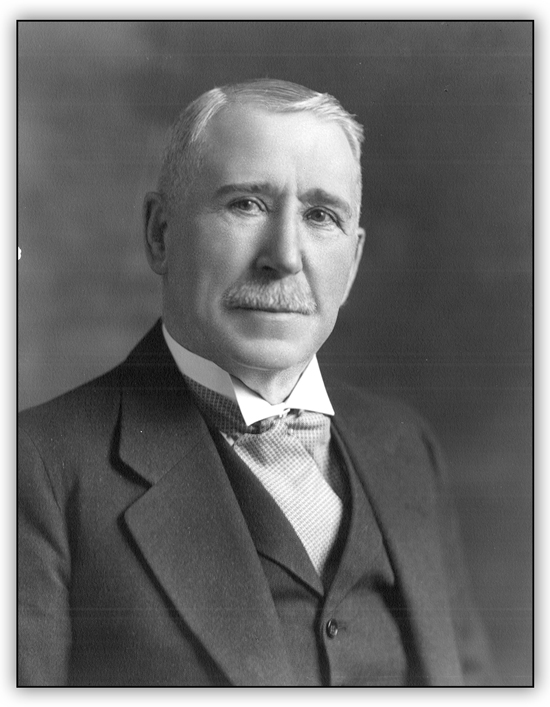
| Exhibit Home | Next
In the early 20th century, Canada was not only dealing with a recession echoed around the world, it was also undergoing intense urbanization and industrialization. New fundamental shifts in society and workplaces challenged governments to evolve and adapt.

Click to see a larger image
Eaton's manufacturing-tailoring and sewing department, making Eaton Brand Clothing [man in photo is tailor Harry Willer], 1912
T. Eaton Company fonds
F 229-308-0-1837-3
Archives of Ontario, I0011887
In 1914, Ontario’s Royal Commission on Unemployment called for a Department of Labour to run public employment agencies and help labourers find work.
In 1916, the government founded the Trades and Labour Branch within the Department of Public Works. Inspectors investigated safety complaints, visited workplaces and enforced standards for boilers, turbines and industrial equipment.
At the end of World War I in 1919, Canadians struggled to secure jobs while living costs rose. That year, Ontario’s Department of Labour Act elevated the Trades and Labour Branch to a standalone department with its own Minister – the Department of Labour, and from 1971 through 2019 the Ministry of Labour.
In 1919, Premier William Howard Hearst’s government introduced the Department of Labour Act. It created the Department of Labour, with a Cabinet Minister and a Deputy Minister.

Click to see a larger image
Sir William Howard Hearst,
Premier of Ontario, [ca. 1930]
George S. Henry family fonds
F 9-3-2-6
Archives of Ontario, I0005331

Click to see a larger image
Campaign advertisement for Walter Rollo in
The Labour News, October 10, 1919
Microfilm N 104 Reel 2p
Archives of Ontario
1919 also saw Ontario elect a new government – a coalition between the United Farmers of Ontario and Walter Rollo’s Independent Labour Party.
A broom maker and labour activist, Rollo was sworn in as Ontario’s first Minister of Labour on November 14, 1919.
![Walter Rollo, Minister of Labour, [between 1940 and 1962]](../../../../images/mol/home_page/Walter_Rollo.jpg)
Click to see a larger image
Walter Rollo, Minister of Labour, [between 1920 and 1940]
Department of Labour photographs
RG 7-115-0-28
Archives of Ontario, I0053858